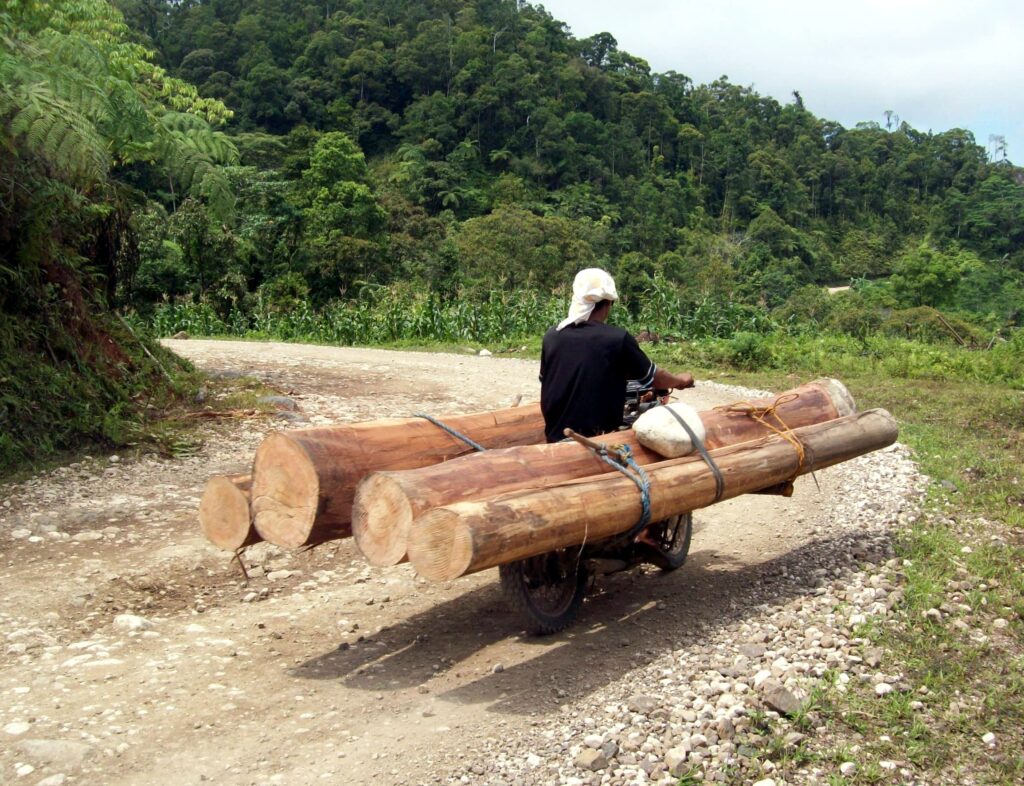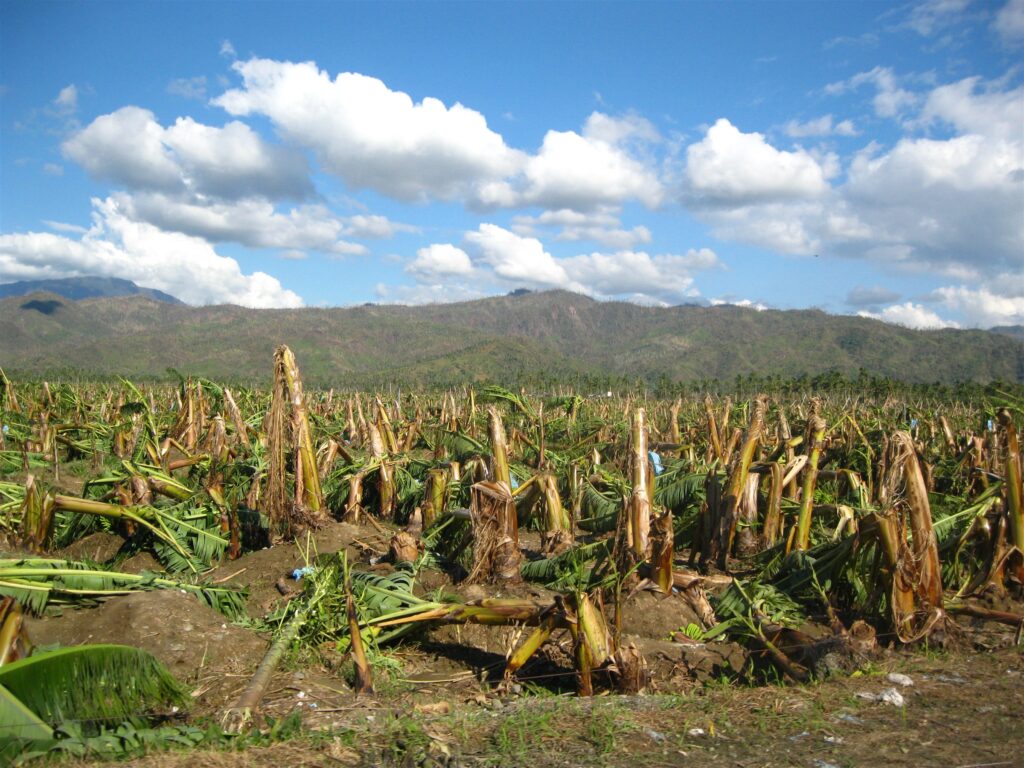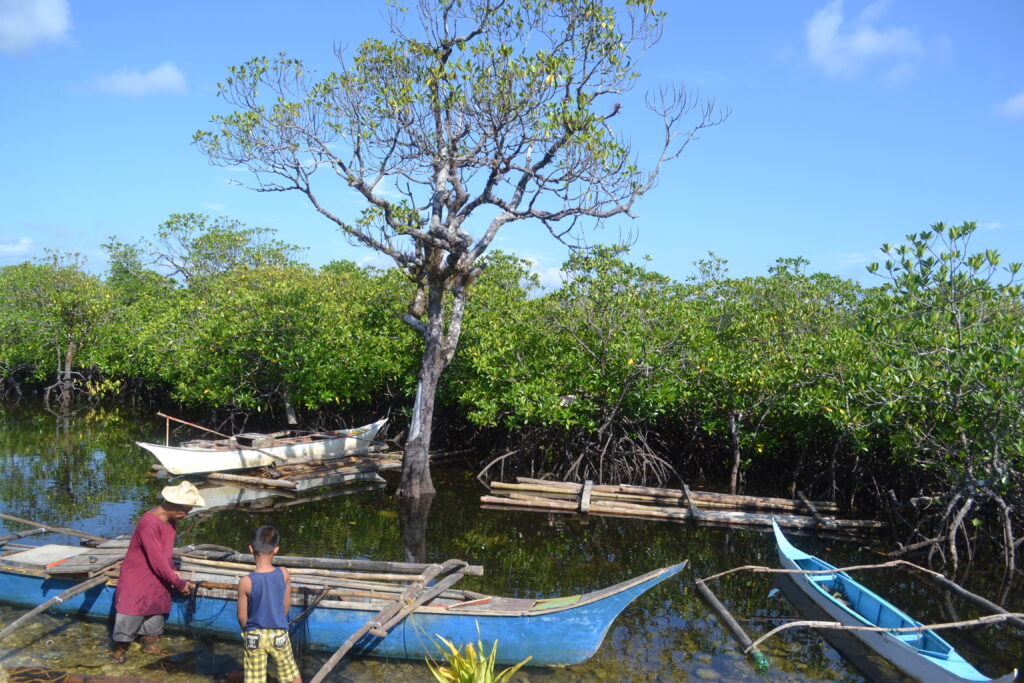Text and Photos by Henrylito D. Tacio
During the onslaught of Typhoon Ulysses, residents of Cagayan Valley in Northern Luzon were caught by surprise when massive water inundated their place. In some areas, floodwater reached over 13 meters high, making some towns totally submerged and leaving thousands of residents stranded.
Blamed for the sudden surge of water was due to the release of floodwaters from Magat Dam in Isabela. But probing deeper, some environmentalists, including Cagayan Governor Manuel Mamba, traced the problem to deforestation.
“Beyond the dam, the principal culprit is the massive deforestation of our watershed areas which serve to regulate the release of rainwater from our hills and mountains, and the decimation of so many trees in our communities which function to increase the absorptive capacity of our grounds,” wrote Joel Ruiz Butuyan in a Philippine Daily Inquirer feature.
Deforestation was in the form of illegal mining and illegal logging. So much so that President Rodrigo R. Duterte himself urged Roy Cimatu, the head of the Department of Environment and Natural Resources (DENR), to investigate these two activities in the province.

“I will direct here General Cimatu to look into the illegal mining, especially where the people are building their shelters downwards,” Duterte told the media attending the press briefing held at the provincial capitol in Tuguegarao City.
It was not the first time – nor the last. In 2011, when Typhoon Sendong hit Cagayan de Oro in Mindanao, the rivers were flooded, and people were crushed by logs or drowned. About 338,000 people were greatly affected.
Sean McDonagh, a priest who worked in the area, said much of the region was converted from rainforest into pineapple plantations. “The deforestation was literally criminal,” he told The Universe Catholic Weekly. “If rainforests in the area had left intact, even 12 hours of continuous rain would not cause this devastation. The rainforest canopy would stop the torrential rain from hitting the ground directly. Trees would also absorb the water.”
The same thing happened when Typhoon Pablo hit Davao de Oro in 2012. Arturo Uy, then the governor of the province, traced the deadly landslides and flash floods spawned by the typhoon due to previous illegal logging activity that denuded the mountain ranges surrounding the valley. “There’s no illegal logging here anymore, because obviously, there are few trees left to cut,” he was quoted as saying by Philippine Daily Inquirer.
“The root cause of what is happening now is the denudation of our forests,” commented an environmentalist. “This is a sin of the past that we are paying now.”

Rev. Harold R. Watson, a former American agriculturist who had been helping the locals in Mindanao, agreed. “When man sins against the earth, the wage of that sin is death or destruction,” he explained. “This seems to be the universal law of God and relates to all of God’s creation. We face the reality of what man’s sins against the earth have caused. We are facing not a mere problem; we are facing destruction and even death if we continue to destroy the natural resources that support life on earth.”
It is impossible to exaggerate the ecological crisis that is now happening in the country. A study done by the UN Food and Agriculture Organization (FAO), entitled Sustainable Forest Management, puts it bluntly: “Most of the (Philippines’) once rich forests are gone. Forest recovery, through natural and artificial means, never coped with the destruction rate.”
More than 90 years ago, the Philippines was almost totally covered with forest resources distributed throughout its 30 million hectares.
“From the late 1950s through 1973, deforestation in the Philippines reached 172,000 hectares per year. Virgin forests have been especially hard hit, declining by 1.7 million hectares from 1971 to 1980 alone,” wrote Robert Repetto in his book, The Forest for the Trees? Government Policies and the Misuse of Forest Resources.
In the past, forest resources helped fuel the country’s economy. In the 1970s, the Philippines was touted as the prima donna among world timber exporters. Today, it is considered “a wood-pauper,” to quote the words of veteran journalist Juan Mercado.
A few years before his death in 1992, national scientist Dr. Dioscoro Umali deplored: “Over the last 25 years, we sold over 101.6 million cubic meters of prime logs abroad. We subsidized developed countries with cheap timber. Rough estimates indicate that exports reached over US$6 billion. Much of that income was salted abroad. It never benefitted those who live in forest communities.”
Oftentimes, logging companies passed the blame on shifting cultivation done by kaingineros, or slash-and-burn farmers, for the rapid disappearance of forests. They said kaingineros log without restraint and, unlike them, which have so-called corporate responsibility.
Some 80,000 to 120,000 families cleared an estimated 2.3 million hectares of forest land from 1971 to the 1980s alone. “As elsewhere, the spread of shifting cultivation largely reflects population growth and the economy’s failure to provide employment alternatives for the country’s rural poor,” Repetto wrote.
Mining also threatens the country’s forest cover. “Through the Mining Act of 1995, mining companies are given timber rights, which allow them to cut trees inside their concessions,” said Marjorie Pamintuan, the spokesperson of Kalikasan People’s Network for the Environment.
In 1982, the discovery of gold on Mount Diwalwal in Compostela Valley triggered a gold rush to an area of 729 hectares. It has “the largest gold deposit in the world,” said the Department of Environment and Natural Resources (DENR). Blacksmith Institute believed that “an estimated $1.8 billion worth of gold reserves remain untapped in the 5,000-hectare mountain where some 30,000 small-scale miners operate, many illegally.”
More than 25 years since the Catholic Church leaders warned against an ecological debacle in the country, deforestation continues. Today, “the Philippines is among the countries that are losing their forest cover fast, ranking fourth in the world’s top 10 most threatened forest hotspots,” deplored Pamintuan. “If the deforestation rate of 157,400 hectares per year continues, the country’s remaining forest cover will be wiped out in less than 40 years. The area lost to deforestation every year is twice the land area of Metro Manila.”
The extensive loss of forest is catastrophic for a country with a population of more than 100 million. “Failure to protect our remaining forest would mean a great loss of the country’s rich repository of biodiversity of all time,” said Fulgencio Factoran when he was still DENR chief.
“The Philippines is one of the most threatened in the world. The rate of extinction of species is 1,000 times the natural rate because of manmade activities,” Demetrio Ignacio, environment undersecretary, was quoted as saying. “It is a crisis. We are the hottest of the hot spots.”
A pair of Philippine eagle, for instance, needs at least 7,000 to 13,000 hectares of forest as nesting territory. “The Philippine eagle has become a critically endangered species because the loss of the forest had made it lose its natural habitat,” deplored Dennis Salvador, the executive director of the Philippine Eagle Foundation.
More than 400 plant and animal species in the Philippines are currently threatened with extinction, including the Philippine eagle and the tamaraw,” the Washington, DC-based Population Reference Bureau reported. A recent study by Conservation International said only about four percent of the Philippines’ forests remain as a natural habitat for many endemic species.
Aside from biodiversity loss, the country is also losing its primary resource for food production, the topsoil. With no trees left to anchor it, the exposed soil is swept away by winds and torrential rain.
“Forty-five percent or around 13 million hectares of arable land in the Philippines are either moderately or severely eroded,” said Loren Legarda, quoting a 2010 report released by the Department of Agriculture’s Bureau of Soils and Water Management, when she was still with the Senate. “This led to soil degradation and lower agricultural output despite application of modern farming practices.”
Another consequence of soil erosion: siltation of waterbeds, reservoirs, and dams. For instance, the Magat reservoir has been reported to cut its probable life span of 100 years to 25 years. The Ambuklao Dam reservoir has had its life halved from 60 to 32 years as a result of siltation.
Deforestation also means less water. Without vegetative cover, especially the trees, the land’s water absorption capacity is greatly reduced. “Deforestation has left upper watersheds unprotected, destabilizing river flows, with significant effects,” Repetto wrote.
The vanishing forests have also altered the climatic condition in the country. Periods of drought have become more common and extensive in the dry season, while floods have prevailed in the rainy months. The late senator Heherson Alvarez once commented that if deforestation is not soon curbed, time will come that “we will be traveling to Manila and around Central Luzon by bancas.”

It’s high time to reforest the Philippines – but how? Data from the Forest Management Bureau show that the government and the private sector’s combined reforestation efforts are not enough to arrest rapid deforestation.
But Filipinos must persevere. Trees are one of nature’s most efficient weapons to tie down steep hillsides, check the growth of big gullies, stabilize unsteady stream banks, and screen cultivated fields from harmful winds. But with thin forests tying down the mountain soil, floods are inevitable.
The “flooding problems,” admitted then-President Beningo Aquino III in his 2011 State of the Nation Address, “are caused by incessant and illegal cutting down of trees.” To which Alvarez believed, “The illness of our forest is complicated – and cannot be cured – with one-stop prescription of a single medicine.”
Even at the end of the world, so goes a saying, we need to plant trees. “A person without children would face a hopeless future; a country without trees is almost as helpless,” American President Theodore Roosevelt reminded.

